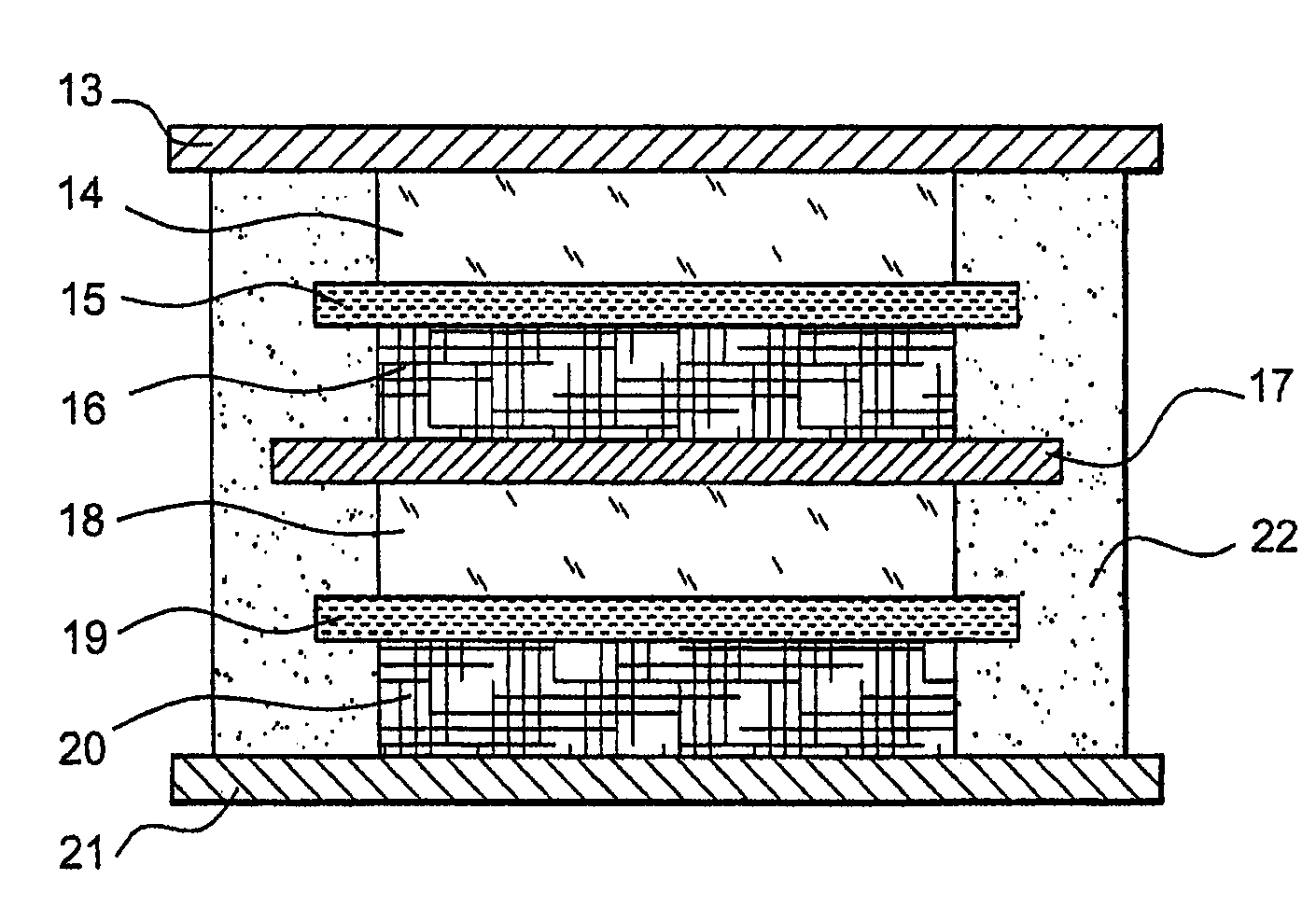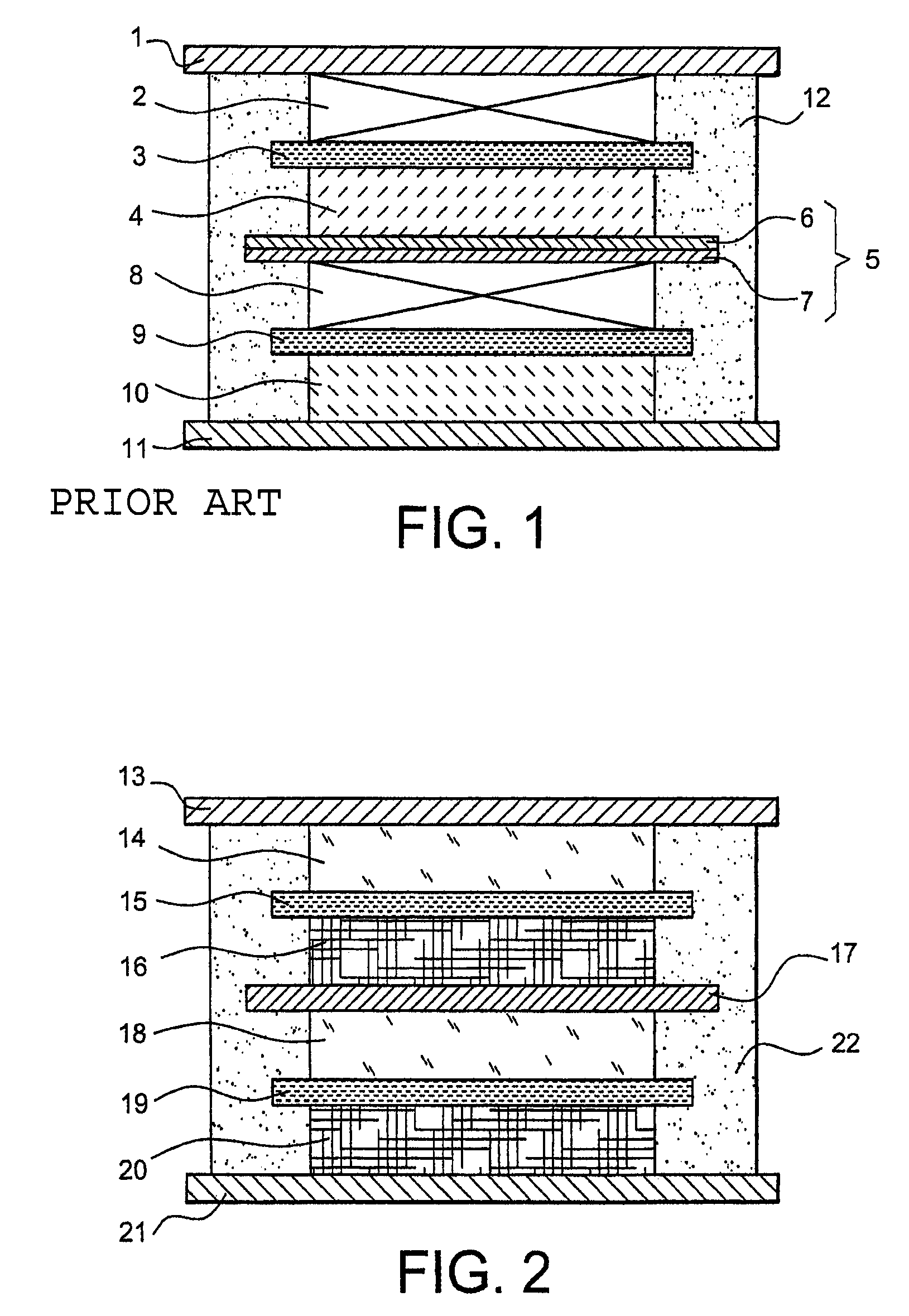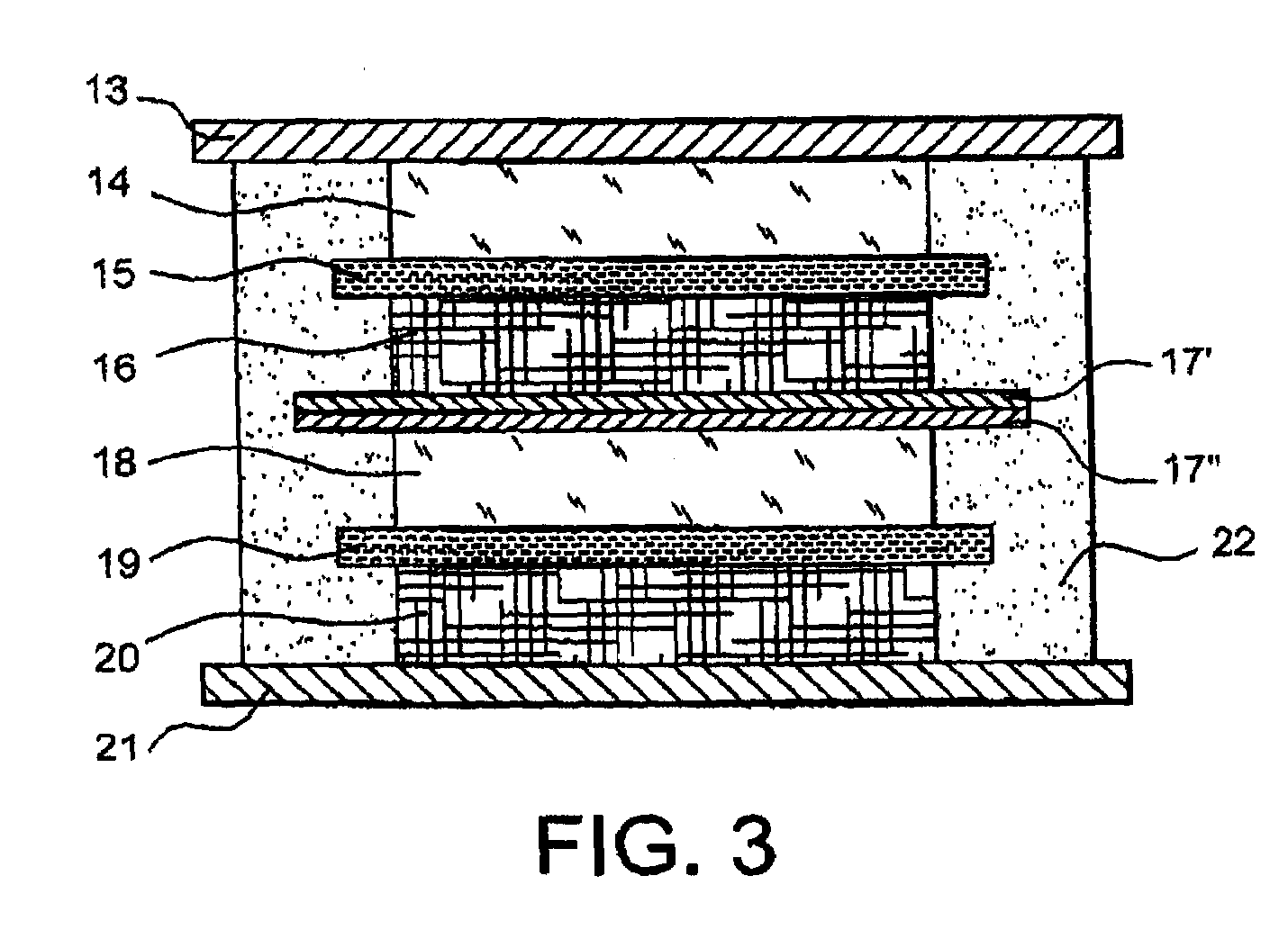Lithium electrochemical generator comprising at least a bipolar electrode with conductive aluminium or aluminium alloy substrates
a technology of lithium electrochemical generator and bipolar electrode, which is applied in the direction of negative electrode, bipolar electrode, non-aqueous electrolyte cell, etc., can solve the problems of limiting the power performance of lithium storage batteries and their lifetime, affecting the safety of the battery, so as to improve the intrinsic safety, the effect of reducing the risk of lithium dendrite formation
- Summary
- Abstract
- Description
- Claims
- Application Information
AI Technical Summary
Benefits of technology
Problems solved by technology
Method used
Image
Examples
example
1) Production of the Positive Electrode
[0082]A positive electrode with the following composition by mass:[0083]85.5% Li1.04Mn1.96O4 from Erachem Europe;[0084]8.5% of super P carbon black from Erachem Europe; and[0085]6.0% of SOLEF 6020 polyvinylidene fluoride (PVDF) from Solvay;
was produced according to the following protocol:[0086]the manganese oxide and carbon black powders were weighed separately;[0087]an N-methyl pyrrolidone (NMP) solution containing 12 wt % PVDF was prepared;[0088]the PVDF dissolved in NMP was introduced into a mixer and then NMP added to dilute it;[0089]the powders were progressively added, while continuing to mix;[0090]after obtaining a homogeneous mixture, an aluminium foil 20 microns thick was coated with this mixture using a micron-scale doctor blade; and[0091]the electrode thus obtained was dried in an oven at 80° C., initially for 1 hour at atmospheric pressure, and then for 2 hours under vacuum.
2) Production of the Negative Electrode
[0092]A negative ele...
PUM
| Property | Measurement | Unit |
|---|---|---|
| thickness | aaaaa | aaaaa |
| density | aaaaa | aaaaa |
| density | aaaaa | aaaaa |
Abstract
Description
Claims
Application Information
 Login to View More
Login to View More - R&D
- Intellectual Property
- Life Sciences
- Materials
- Tech Scout
- Unparalleled Data Quality
- Higher Quality Content
- 60% Fewer Hallucinations
Browse by: Latest US Patents, China's latest patents, Technical Efficacy Thesaurus, Application Domain, Technology Topic, Popular Technical Reports.
© 2025 PatSnap. All rights reserved.Legal|Privacy policy|Modern Slavery Act Transparency Statement|Sitemap|About US| Contact US: help@patsnap.com



